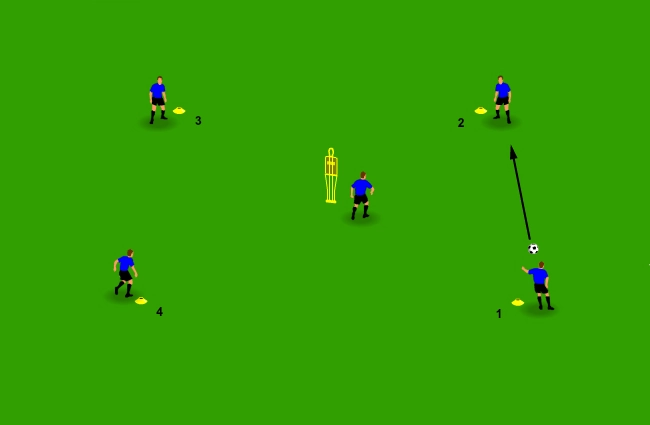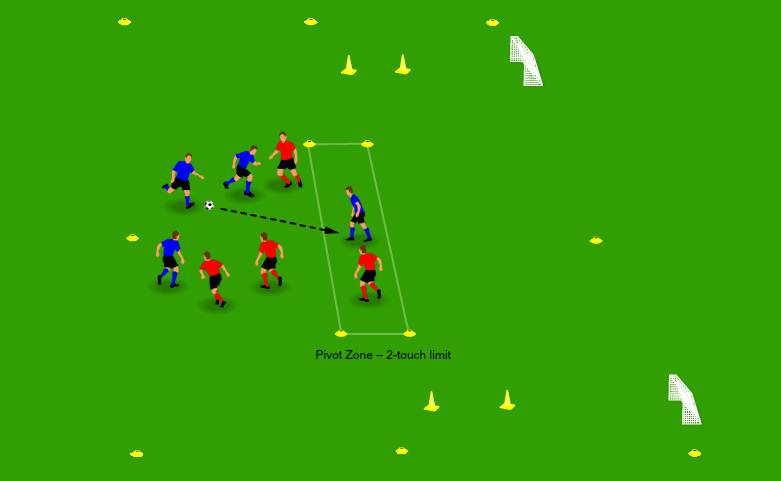Switch Play and Follow Your Pass

Attacking in a straight line is predictable. This drill teaches players to change the point of attack and fill the next station after every pass so circulation never stops. It fits neatly into one quarter of a pitch, making it perfect for small training groups.
Setup
- Players: 5 (one player per cone/mannequin). Scale by running parallel groups if you have more numbers.
- Area: Quarter of a standard pitch laid out as a rectangle with four outer cones and one central mannequin/pole.
- Equipment: 4 cones, 1 mannequin (or pole), and 1–2 balls. A second ball ramps up tempo once the pattern is clean.
Lay out cones one to four in a diamond or elongated rectangle. Place the mannequin at the centre to simulate traffic in midfield. Number the stations clockwise so every player knows the order they must sprint to after releasing the ball.
Instructions
- Player 1 at cone 1 plays into Player 2 at cone 2 and immediately sprints to cone 2.
- Player 2 uses two touches (or one if they can) to fire a pass into the central player behind the mannequin, then follows the pass to the mannequin.
- The central player opens their body, plays diagonally to Player 3 at cone 3, and races to cone 3.
- Player 3 repeats the pattern to Player 4, then runs to cone 4.
- Player 4 connects back through the mannequin before carrying the ball to cone 1 to restart the sequence.
The ball effectively travels in a “Z” shape across the grid, forcing the group to switch the point of attack with every pass. Keep the rhythm for 10–15 minutes and count completed cycles to add competition between groups.
Coaching cues
- Weight every pass so the receiver can play forward in stride.
- Demand maximum of two touches for outer players; promote one-touch play through the mannequin when possible.
- Sprint after every pass—“follow your pass” is the rule that keeps spacing clean.
- Communicate early so teammates know where the next ball is going.
Variations
- Second Ball: Introduce a trailing ball thirty seconds into the pattern to remove idle time.
- Direction Change: After five cycles, run the pattern in the opposite direction to keep minds switched on.
- Defensive Pressure: Place a passive defender near the mannequin to disrupt poor body shape.

Takeaways
- Passing accuracy & timing. Quick switches require clean angles, crisp technique, and a pass that invites the next action.
- First touch under pressure. Limiting touches trains players to cushion the ball away from traffic and play the next pass instantly.
- Explosive reactions. Sprinting to the next cone after every pass simulates the off-ball running needed in possession play.
- Collective rhythm. Because the grid functions only when everyone moves together, this drill builds chemistry and trust in circulation patterns.
Tried a twist on this drill? Share your tweaks with the community on Facebook or tag @footballtechnik on Instagram—we love seeing how coaches adapt these switch-play patterns.



